Metal is one of the most popular materials in the prototyping world. It offers several advantages, allowing for its use in a wide range of industries. A practical metal prototype is vital to getting the optimum finished product for businesses. Thus, it is essential to understand the various methods of making metal prototypes.
This article discusses the various effective methods that you can use to create a metal prototype and their key benefits. You’ll also learn how to choose the best method for your specific needs. Before then, let’s discuss some basics.
What is a Metal Prototype?
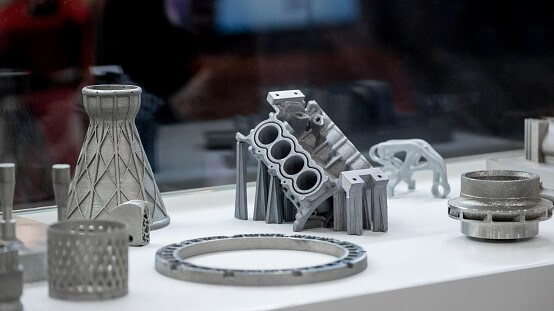
First, a prototype is a rough draft or mock-up of an intended product. Prototypes are built before full-scale manufacturing begins to allow designers to carry out market and functional tests of products. You can make prototypes from various metals depending on your chosen manufacturing process.
So, metal prototypes refer to prototypes made with metal manufacturing techniques. They can be created from steel, aluminum, or other metals. We can have both pre-production metal prototypes and early-stage metal prototypes, depending on business needs.
Industries like aerospace, automotive, medical, and electronics industries employ them for various applications. All thanks to their incredible advantages, which we will get to in a bit.
When Should You Use Metal for Prototyping?
You are probably familiar with plastics in the early prototyping stages in parts development. Then, you wonder, why use metal when you can use plastics? The early prototype stages do not require any mechanical or functional needs.
This enables plastic to achieve similar effects as metal at lower costs. However, a metal prototype is more useful in the functional testing stage. Some prototypes have special functions, such as hybrid prototypes, functional prototypes, and pre-production prototypes.
They all need to carry out some roles in their applications, and many of these roles require specific material characteristics. Metal usually provides a wide assortment of these characteristics.
That’s not all; metals can be beneficial to even non-functional prototypes. If there is a need to use a looks-like prototype to demonstrate a concept, it is often better to go with metal — especially when the mass production of the part will be in metal.
Therefore, metal prototyping can increase chances of commercial success, with long-term cost advantages. Moreover, it will be challenging to transform a plastic 3D printed rapid prototype into a metal production part.
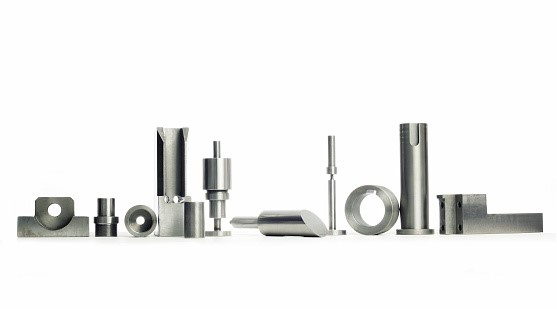
What Are the Common Metals Used in Rapid Prototyping?
Two of the most common metal materials used for metal prototyping are aluminum and steel. On some occasions, there may be a need to use metals like copper, titanium, chrome alloys, magnesium, and other metal elements and alloys.
For instance, titanium is a material with a very high strength-to-density ratio with a high melting point. However, it is not very thermally or electrically conductive. These must be considered in their applications.
Aluminum is popular because it is lightweight and easy to machine. It also has other advantages like corrosion resistance, scalability, anodization potential, and thermal & electrical conductivity.
Magnesium alloys are among the metal prototype production materials that keep growing in product applications because it combines strength with thermal conductivity and low weight density.
While choosing metals for your prototyping, you should consider durability, strength, electrical conductance, cost, and ultimately, intended applications.
How Do You Make a Metal Prototype?
There are various manufacturing processes for making metal prototypes. Factors such as tolerance, geometry, quality, and quantity will determine the best method for different applications. The best method helps you achieve the best mechanical results while keeping costs and lead time minimal.
Here are the standard techniques for developing metal prototypes and their key benefits:
CNC Machining
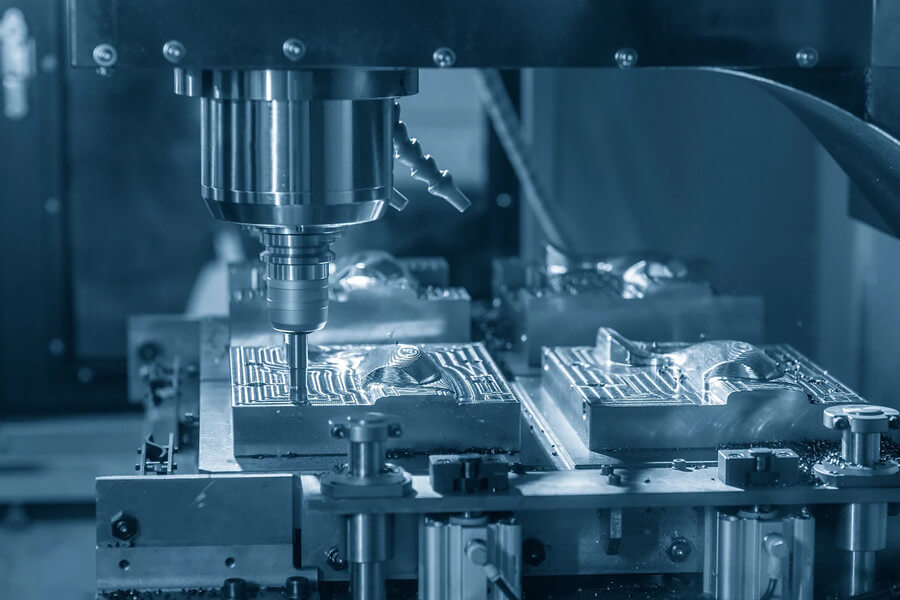
Custom CNC machining involves using numerical control CNC machines to create metal prototypes. These machines are automated, with the control coming from a connected computer. It is a subtractive manufacturing process, unlike 3D printing, involving the removal of sections of metal materials from solid blocks to form the final shape.
This method is compatible with several metals, including steel, aluminum, magnesium, zinc, etc., and relatively affordable for prototyping. There is no minimum order quantity, leading to cost-effectiveness.
3, 4, and 5-axis CNC machining tools offer great flexibility to manufacture very complex features with tight tolerances. Also, CNC machines enable easy alteration of digital CAD designs for efficient workflow. With this, making duplicates is more straightforward.
However, material waste is inevitable with CNC machining because it is a subtractive process.
Key Benefits of CNC Machining
- Increased accuracy for consistent quality
- Relatively low cost
- Increased efficiency and faster turnarounds
- Design freedom
- Flexible material selection
3D Printing/Direct Metal Laser Sintering (DMLS)

Another efficient metal prototyping method is 3D printing. Metal 3D printing is an additive process that helps to create metal parts by using AM technologies. These technologies include direct metal laser sintering (DMLS) and selective laser melting (SLM). 3D printers use laser beams to fuse various layers of AM metal powders.
This method also uses digital CAD design inputs to give quicker design alterations, similar to CNC machining. However, one of the biggest advantages of metal 3D printing is that it allows for geometrical flexibility.
3D printed parts can have complex and detailed features such as complex internal sections. This is due to the additive manufacturing nature of the technique, building metal prototypes layer by layer instead of cutting sections away.
One downside to 3D printing is that the surface finish may be less impressive than with other processes. However, suitable finishing treatments can help solve this problem. Also, 3D printing uses metal powder materials, making material selection less flexible.
Key Benefits of 3D Printing
- Greater design control
- Great for lightweight parts
- Time-saving and cost-effective
- Geometrical flexibility
Sheet Metal Fabrication

Sheet metal fabrication refers to a group of processes involving the deformation, cutting, and assembly of sheet metal parts. It involves placing the sheet metal plate on a flatbed for cutting machines for creating sheet metal parts.
The processes also include punching, laser cutting, bending, spinning, and welding. It helps make functional products like enclosures, brackets, and other industrial parts. Making a functional metal prototype for sheet metal projects is always worthwhile.
In this case, the same sheet metal fabrication technique will be used for mass production. You can guarantee that the metal parts are strong and highest quality. However, the process may incur more costs than other alternative processes, especially when there is a need for multiple forming processes.
For instance, a metal prototype with a right-angle bracket and holes may need three different machines. These are laser cutter, punching machine, and brake. Sheet metal fabrication is particularly useful in mass production because it helps to create several copies quickly.
Key Benefits of Sheet Metal Fabrication
- High quality and high-precision parts
- Increased capacity production
- Custom-built designs
- Enables modern finishes
- Involves durable materials
Metal Casting
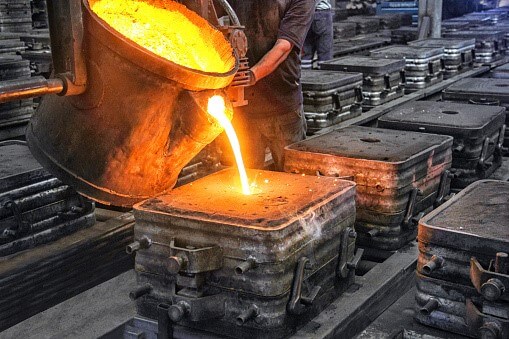
The casting method involves pouring hot liquid metal into a mold containing a hollow cavity or recess to get the desired shape of finished products. After this, the liquid metal material is removed from the mold and left to solidify.
Although it is an efficient technique, many engineers do not consider it for prototyping works. This is because it often requires specialized equipment and the creation of a mold. All of these make the process laborious and expensive.
However, there are unique ways metal casting can create cast metal prototypes. For example, investment casting can make use of a 3D printer for creating wax models. The wax models can then help to create affordable molds for casting.
On the other hand, pressure die casting helps to reduce the tooling cost by creating a simple mold. It then adds fine features as a post-casting process with a CNC machine.
While metal casting may be relatively expensive, manufacturers retain tooling for bridge production. This helps to save costs in the long run.
Key Benefits of Metal Casting
- Creates parts of various sizes and weights
- Increased production quality
- Creates extremely strong parts
Aluminum Extrusion
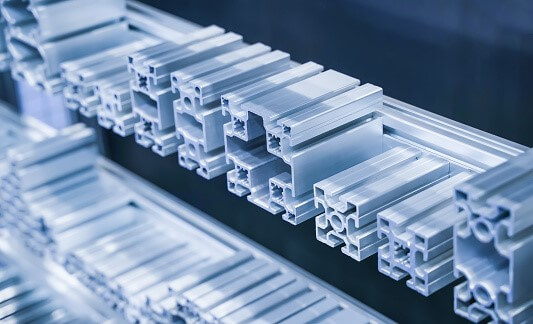
Another metalwork process not generally considered as a prototyping method is the aluminum extrusion method. During extrusion, fabricators force materials through already shaped dies to produce long parts with uniform cross-sections. After this, the parts are cut to the desired lengths.
Most companies that are offering extrusion deal with high-volume orders. However, aluminum extrusion is sometimes worthwhile for metal prototyping. It is ideal for simpler parts like joints, brackets, and metal bars.
You can also employ this process for pre-production and testing prototypes to mimic the final part.
Key Benefits of Aluminum Extrusion
- Cost-effective manufacturing
- High precision capabilities
- Versatile design capacity
- High-performance application
- Environmentally friendly
Advantages of Metal Prototypes
The automotive, aerospace, aviation, medical, construction, electronics, and other industries use metal prototypes for product design due to its several advantages. These benefits include:
- Superior Strength – The biggest advantage of metal is probably its strength. Metals like stainless steel have high yield strength and increased hardness, making them durable. Such metals can withstand several conditions even when you aim to make a detailed prototype part. That way, you have better functional and mechanical performance while maintaining the design perfectly.
- Heat Resistance – Compared to plastic, metal materials have much higher melting points. Thus, they are less likely to degrade over time in high-temperature environments. This makes them useful for prototyping and manufacturing processes.
- Cost-Effectiveness – Metal can be relatively cheaper than plastic in some applications. Its performance reduces the need for continual parts replacement, reducing long-term costs.
- Better Aesthetics – Metal parts are usually more advanced than parts used with other prototyping materials. They also enable improved finishing techniques to make them more appealing to people.
- Versatility – Using metal for prototyping provides versatility because it allows manufacturers to use materials for a wide array of processes. Therefore, there is design freedom for several applications.
Choosing the Best Metal Prototyping Technique
The success of a rapid prototype will depend on your selection of the rapid prototyping technique for product development. There are several techniques available with prototyping, and we have discussed the most effective ones. Each of these techniques is ideal for different applications.
Therefore, you should consider the following factors when selecting a rapid prototyping method for metal prototypes.
1. Quality
The expected quality of your metal prototype compared to the final product is crucial. If you need to link functional elements to specific material properties like durability and surface finish, additive manufacturing might not be the best solution. You may want to go for CNC machined metal parts or casting.
2. Purpose
Rapid prototyping purposes often vary based on the stages of product development. Each stage comes with its functional requirements and features. This will determine the quality of the prototype needed. So, it would be best to consider every functional aspect of the prototype. Also, changes and modifications are essential considerations. Always choose a technique that will enable these.
3. Part Complexity
The intricacy of the prototype features and design complexity will also dictate your process selection. metal 3D printing, for example, is ideal for complex parts. However, you must be cautious because complexity may incur increased costs.
4. Quantity
The number of prototype parts you want is another vital consideration when choosing prototyping technologies. Some processes are best suited for a small number of parts, while others are effective in producing high batch volumes. Parts volume plays a more significant role in direct metal laser sintering methods because of costing and turnaround time.
5. Cost/Budget
Generally, available resources go in hand with the prototyping objectives. Therefore, you must also consider the money, time, and labor hours required.
Conclusion
Metal prototypes offer several advantages for a wide range of applications, making metal prototyping a popular process in many industries. This article describes how to make a metal prototype and their key benefits.
Whenever you need to create metal components for your business, AT Machining is always ready to support you throughout the process. Our capability helps us to provide outstanding prototyping options with high-quality results.
Contact us today, and let’s turn your ideas into reality!


